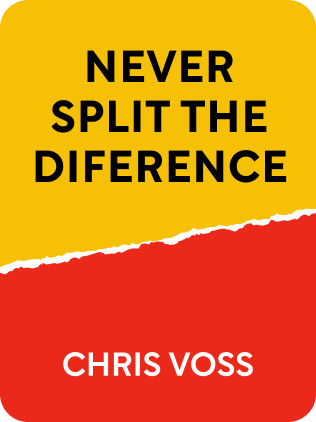

This article is an excerpt from the Shortform book guide to "Never Split the Difference" by Chris Voss and Tahl Raz. Shortform has the world's best summaries and analyses of books you should be reading.
Like this article? Sign up for a free trial here .
What questions should you ask in a negotiation to get the information you need from your counterpart? Should you ask “why” questions?
According to Chriss Voss, a former FBI hostage negotiator, the best questions to ask your counterpart during negotiation are open-ended “how” or “what” questions. Unlike the accusatory “why” questions, these questions lead them along to the conclusion that you want them to reach—all the while convincing them that your desired solution is their idea.
Keep reading to learn about the power of open-ended negotiation questions, why they work, and how to use them to your advantage.
Open-Ended Negotiation Questions
As a good negotiator, your goal is to give your counterpart the illusion of control and lead them to your preferred outcome (while letting them think it’s their idea).
But how do you make them think they’re in the driver’s seat? Voss says you do this by asking open-ended “how” or “what” questions. These kinds of negotiation questions ask the other person for help in coming up with solutions, which gets them to start seeing the situation from your point of view. It’s the first step in dissolving the confrontational, win-lose dynamic that too many negotiations naturally fall into.
For example, if you’re confronted with a price that’s too high or an offer that’s unreasonably low, respond with a simple, “How can I do that?” These straightforward, yet seemingly innocuous questions can be the golden key in a negotiation.
Voss recommends other good open-ended questions like, “How do you expect me to be able to follow through on that?” or “What are you hoping to accomplish?”
Voss notes that these “how” or “what” questions are different from more accusatory questions that begin with more loaded words like “why.” “Why” can be a very problematic word in negotiations, warns Voss. “Why” puts the onus on your counterpart, shines a light on them, and makes them feel like they’re in the hot seat—which takes them out of their comfort zone and into a place where they’re no longer in control. This is exactly where Voss says you don’t want them to be.
For example, think of the enormously different emotional weight between a non-open-ended “why” question like “Why would you say that?” and an open-ended “what” question like “What makes you say that?” The former is accusatory and borderline hostile; the latter is empathetic, welcoming of insight, and devoid of any emotional sting.
| Asking the Right Negotiation Questions. Other negotiation experts back up Voss’s insights about asking open-ended, open-ended questions, arguing that such questions are essential in order to glean valuable information from your counterpart. They warn that your counterpart will be reluctant to divulge information if they think you’re trying to exploit or take advantage of them, but asking the right kind of questions can prevent this. Experts recommend asking questions that enable you to present yourself as someone trying to gather information for a mutually beneficial solution, rather than someone trying to outwit them in a zero-sum competition. They advise asking open-ended questions to elicit more comprehensive responses; interjecting with probing responses like “I see” or “Tell me more”; and asking neutral, non-leading questions (like “Can you tell me about your semiconductor sourcing?”), while combining them with explanations like, “We’ve found that some clients prefer having a standing meeting every month, whereas others prefer to schedule them on an as-needed basis. Could you give me some insight on which meeting structure works best for you and why?” The goal is to put your counterpart at ease so that they see you as a helper, not an adversary. |
Put Them to Work for You
According to Voss, the key strategic benefit of open-ended questions is that they put your counterpart to work helping you. When you ask an open-ended “how” or “what” question, you’re putting the other person in a position where they’re providing solutions to your problems.
This also helps with the implementation of the decision. Your counterpart will buy into it and commit to it because they’ll think they came up with it. In this scenario, they’re the teacher and you’re the student. This gives them a powerful feeling of being in charge. But you’re really in control as the listener, because they’re giving you the information you need.
Voss writes that open-ended questions also prompt longer answers from your counterpart—which, in turn, reveal key information. Your counterpart might reveal what they really desire out of a negotiation or what a potential dealbreaker might be. They might also reveal the challenges they face in actually delivering on the terms you’re negotiating (like, for example, a salesperson whose boss won’t allow them to sell you an item for under a certain amount).
(Shortform note: Other writers have backed up Voss’s ideas about inverting someone else’s mental process, planting an idea in their head, and making them think it was their own original idea. In Unconscious Branding: How Neuroscience Can Empower (and Inspire) Marketing, author Douglas Van Praet writes that when marketers give customers an active role in how they experience and consume a product, it’s more effective than conventional marketing or advertising because it allows customers to form their own unique associations with the product. They’ll be more inclined to consume and purchase it, thinking that this is an intrinsic choice they’re making—but in fact, the positive associations were guided by external marketers. For example, Red Bull built relationships with college students by offering them cases of the energy drink and letting them organize events where they could consume it.)
Staying Out of Their Debt
Crucially, as Voss argues, open-ended questions allow you to get information without then being obligated to reveal information. Straight requests for information can lead to an unproductive tit-for-tat dynamic, where the other side expects some sort of reciprocity (e.g., “I gave you something, now you give me something.”
A straight request for information is something that can either be answered with a simple “yes” or “no” or just a literal, minimal response. Questions like, “Does this apartment have a washer-dryer?” or “When were the windows in this apartment last cleaned?” yield nothing beyond the literal information requested (information that you can often obtain on your own without asking). Instead of putting your counterpart to work for you, writes Voss, you’re setting up the expectation that you’ll pay them back with information of your own. And if your counterpart is really a savvy negotiator, they’ll ask for information that’s highly valuable to you.
Voss argues that open-ended questions free you from this dynamic because they come across as natural, normal, conversational questions instead of requests for information. “How can we get this to work?” doesn’t have the tit-for-tat feel. You’re asking without directly asking.
| When Tit-for-Tat Works Other theorists of negotiation take the opposite assessment of Voss when it comes to “tit-for-tat” or mutual retaliation strategies. In The Evolution of Cooperation, author Robert Axelrod demonstrated that a tit-for-tat strategy was actually the most optimal in negotiating the classic “Prisoner’s Dilemma” game theory problem, with major ramifications for real-world negotiation strategy. In the “Prisoner’s Dilemma,” two criminal accomplices are being interrogated by the authorities. The optimal outcome for the pair is if neither one of them informs on the other. However, if one prisoner decides to give evidence against his accomplice (while the accomplice, meanwhile, says nothing), the turncoat does the best of all—receiving a light sentence, while his tight-lipped accomplice takes the full rap. However, if they both finger each other for the crime, each of them receives a worse outcome than they would have if they’d both stayed silent. The dilemma shows a scenario in which two parties acting purely in their self-interest do not produce the optimal outcome. After conducting a Prisoner’s Dilemma tournament with hundreds of contestants, Axelrod concluded that mutual cooperation at the outset followed by a tit-for-tat strategy produced the best outcome. The most successful contestants began with a mutual, cooperative strategy, but then made sure to properly match what their counterpart did at every turn (i.e., tit-for-tat). Thus, if one partner defected from the agreed-upon strategy by giving evidence to the police in Round One, the other’s best move was to respond with a defection of their own in Round Two. Axelrod argued that this provided a model for how counterparts should behave in real-world negotiations—start off cooperating; be clear about your actions; “defect” (appropriately and proportionately) from the cooperative strategy when your counterpart does so; back off of your defection if and when your counterpart adjusts their behavior; and accept that there does not have to be a clear winner or loser in the negotiation (you “win” even if only some of your needs are met and you’re better off than you were before, regardless of whether or not your counterpart got more). |

———End of Preview———
Like what you just read? Read the rest of the world's best book summary and analysis of Chris Voss and Tahl Raz's "Never Split the Difference" at Shortform .
Here's what you'll find in our full Never Split the Difference summary :
- Lessons learned from years as an FBI hostage negotiator
- Why negotiation is about emotional appeals, not rational ones
- The 5 methods for tactical empathy, which gets you what you want by focusing on the other person's feelings






